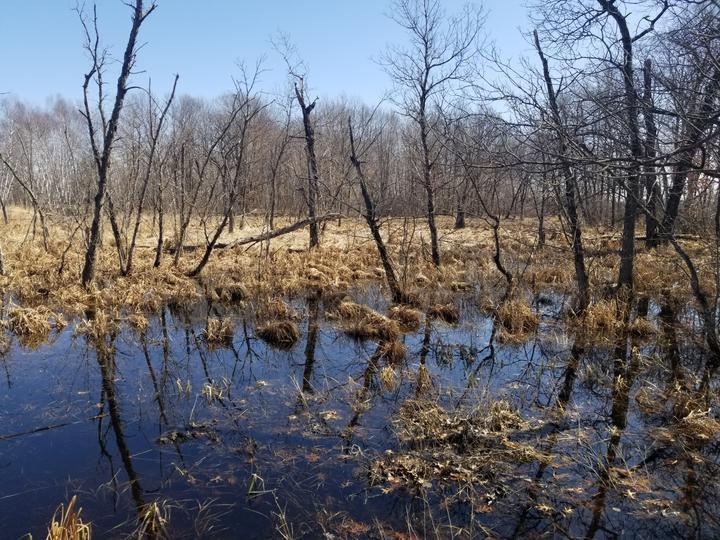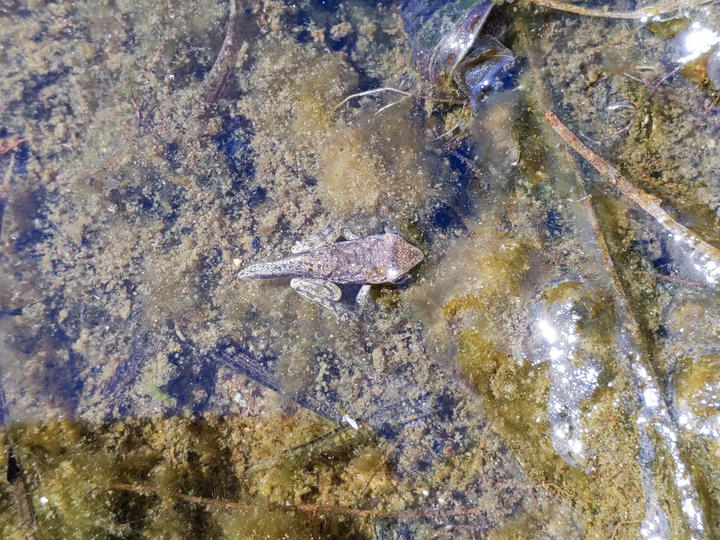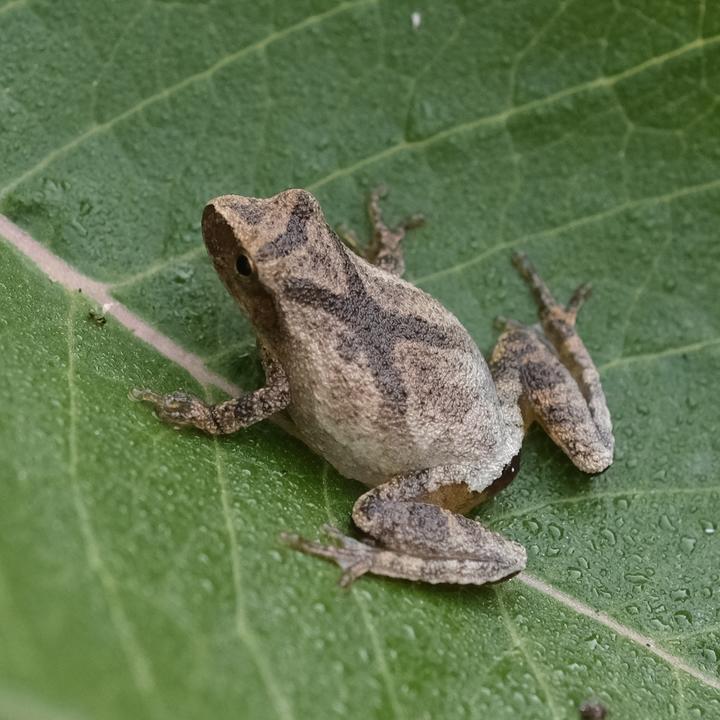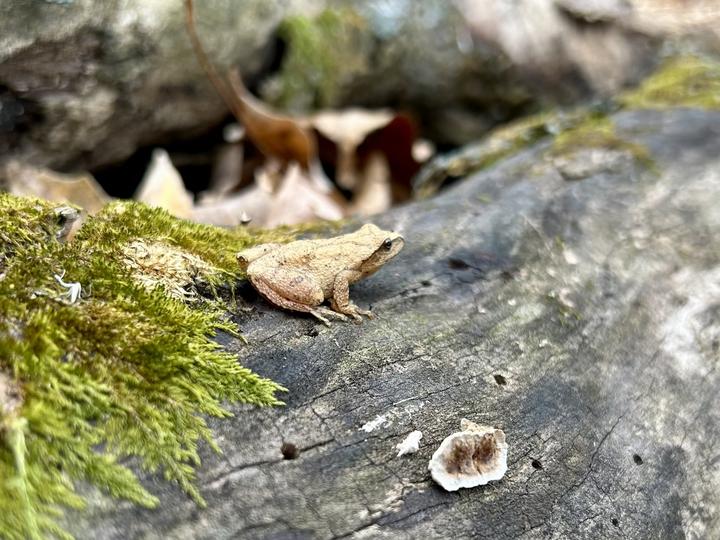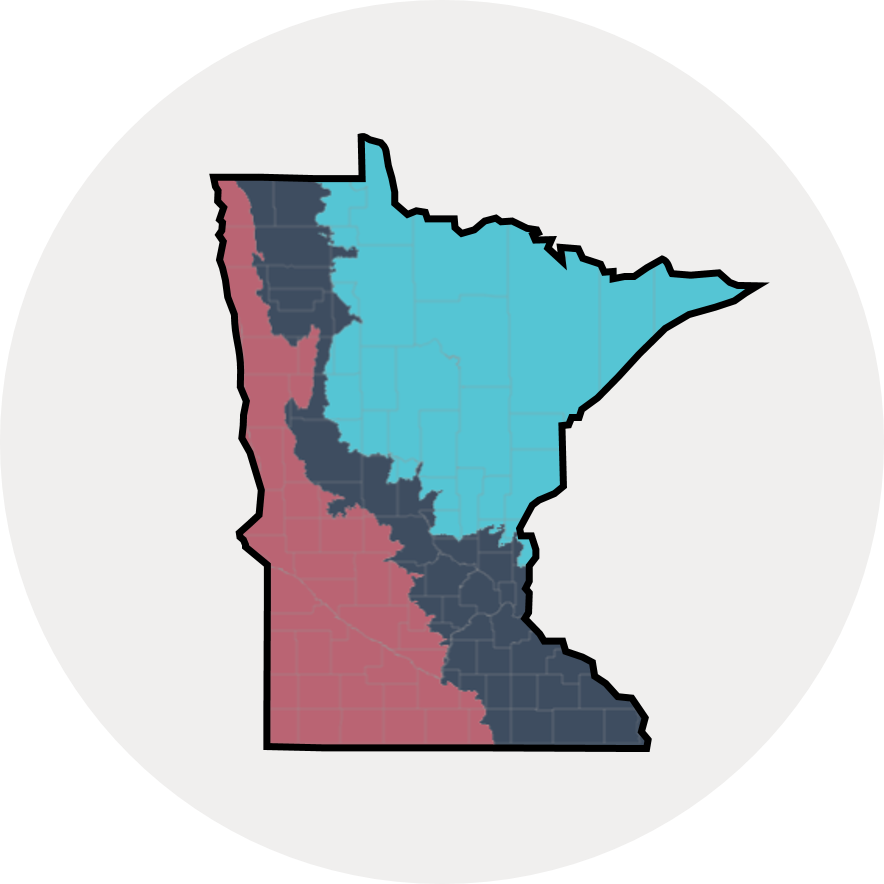More names for this animal
Anishinaabemowin: Omagakii or omakakii (frog)
Dakota: Hnaṡka (frog)
The Dakota and Anishinaabe were among the earliest people to name Minnesota’s plants and animals, as well as to understand them in relation to Minnesota’s climate and seasons. Those original names are still in use, and several are included on the Season Watch website.
Latin (or scientific name): Pseudacris crucifer
The scientific community has a convention of assigning agreed-upon Latin names to every kind of organism. Using scientific names helps people communicate confidently about the same organism and organize lifeforms based on how closely related they are.
Page contents
About the spring peeper
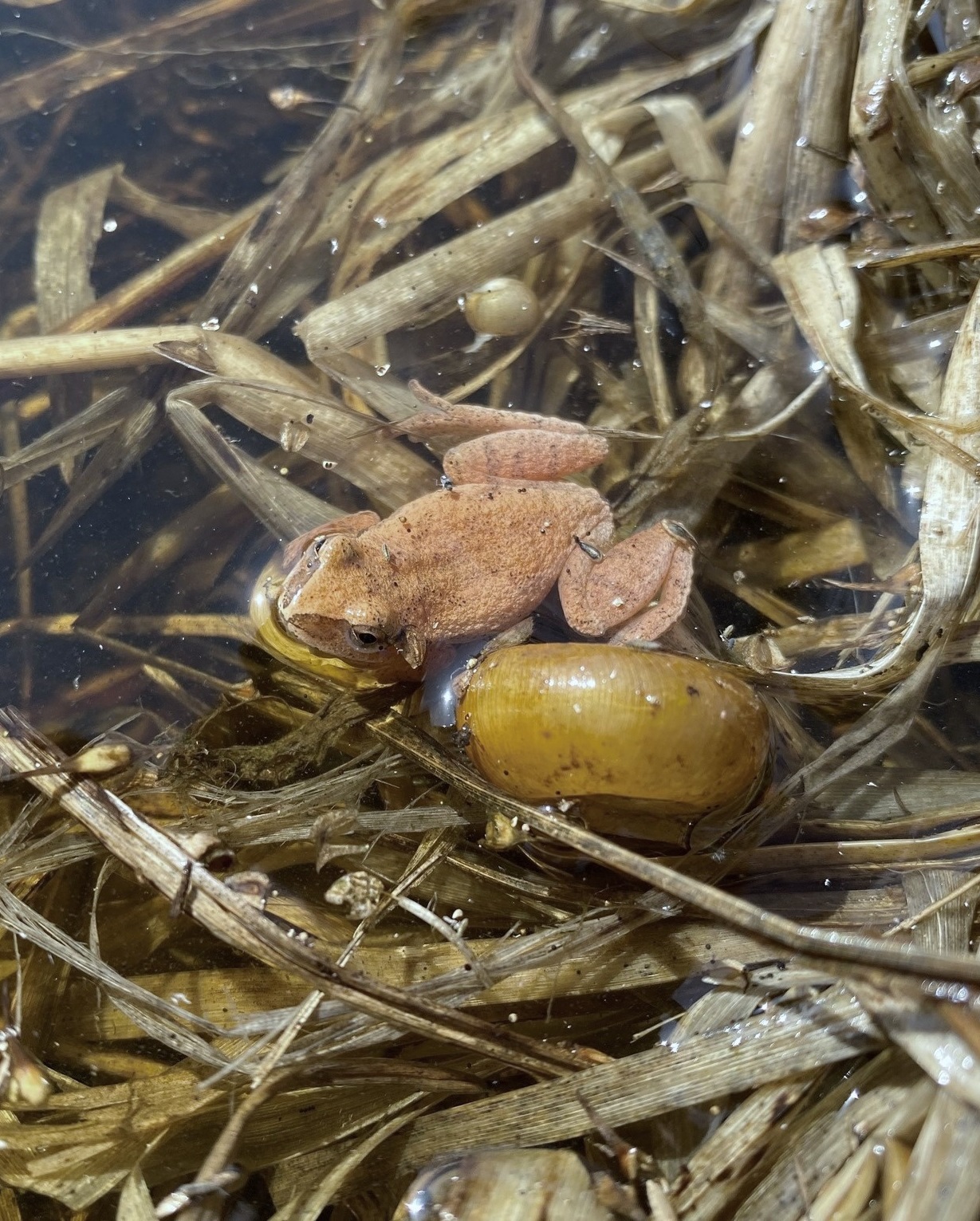
May 10, 2022, St. Louis County, Minnesota
Photo © Adam Heikkila, some rights reserved (CC-BY-NC)
iNaturalist observation
About the spring peeper
- The spring peeper is a small frog about ¾ to 1½ inches long that lives about three years. It is tan in color and often has a darker X-shaped marking on its back.
- Because they are small and nocturnal, peepers are more likely to be heard than seen.
- During breeding, male spring peepers make short, high-pitched sounds, similar to the peeping of a chick. The beginning of their peeping is often an indicator that spring has arrived.
- Throughout the rest of summer, spring peepers live in brushy undergrowth.
- These frogs are adapted to withstand their bodies partially freezing during winter while they stay inactive under logs or in trees.
- Spring peepers are found in the northern and eastern parts of Minnesota.
Visual guide to phenology
Watch for spring peepers' presence (or absence), abundance, and behaviors at different times of year. Also, pay attention to when young-of-year appear and develop.
Note to observers
This page explains general clues to watch and listen for when observing spring peeper phenology. However, this page does not explain how to identify this animal or collect data in a standardized way.
- For help with identification, see a field guide or the Minnesota DNR's webpages on reptiles and amphibians.
- For guidance on collecting data, see Nature’s Notebook.
This recording is predominantly sounds made by spring peepers.
Recording © Norma Malinowski, some rights reserved (CC-BY-NC)
iNaturalist observation
Ambient recording with spring peepers and wood frogs. Peepers make the higher-pitched sounds.
Recording © David, some rights reserved (CC-BY-NC-SA)
iNaturalist observation
Ambient recording with large number of spring peepers, as well as wood frogs.
Recording © Joe Walewski, some rights reserved (CC-BY-NC)
iNaturalist observation
Graphs and historical data
Note: The Orientation Center provides a map, as well as information on reading graphs; interpreting summary statistics, who collected the data and how; and how to download datasets for independent exploration.
First heard
- Earliest: April 2 (occurred in 2012)
- Average: April 18
- Latest: May 6 (occurred in 2013)
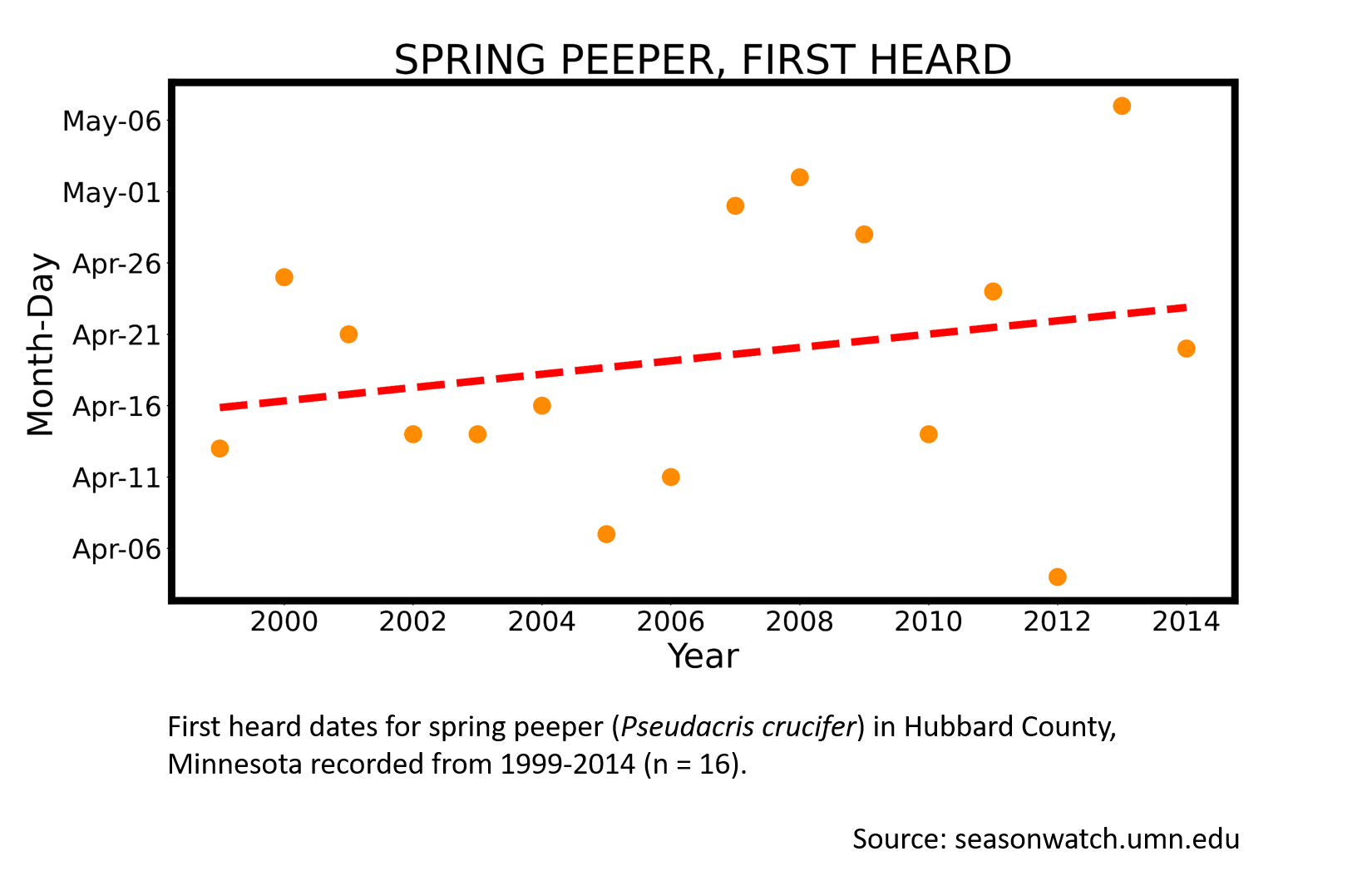
First heard
- Earliest: April 4 (occurred in 2012)
- Average: April 18
- Latest: May 5 and 6 (occured in 2008 and 2013)
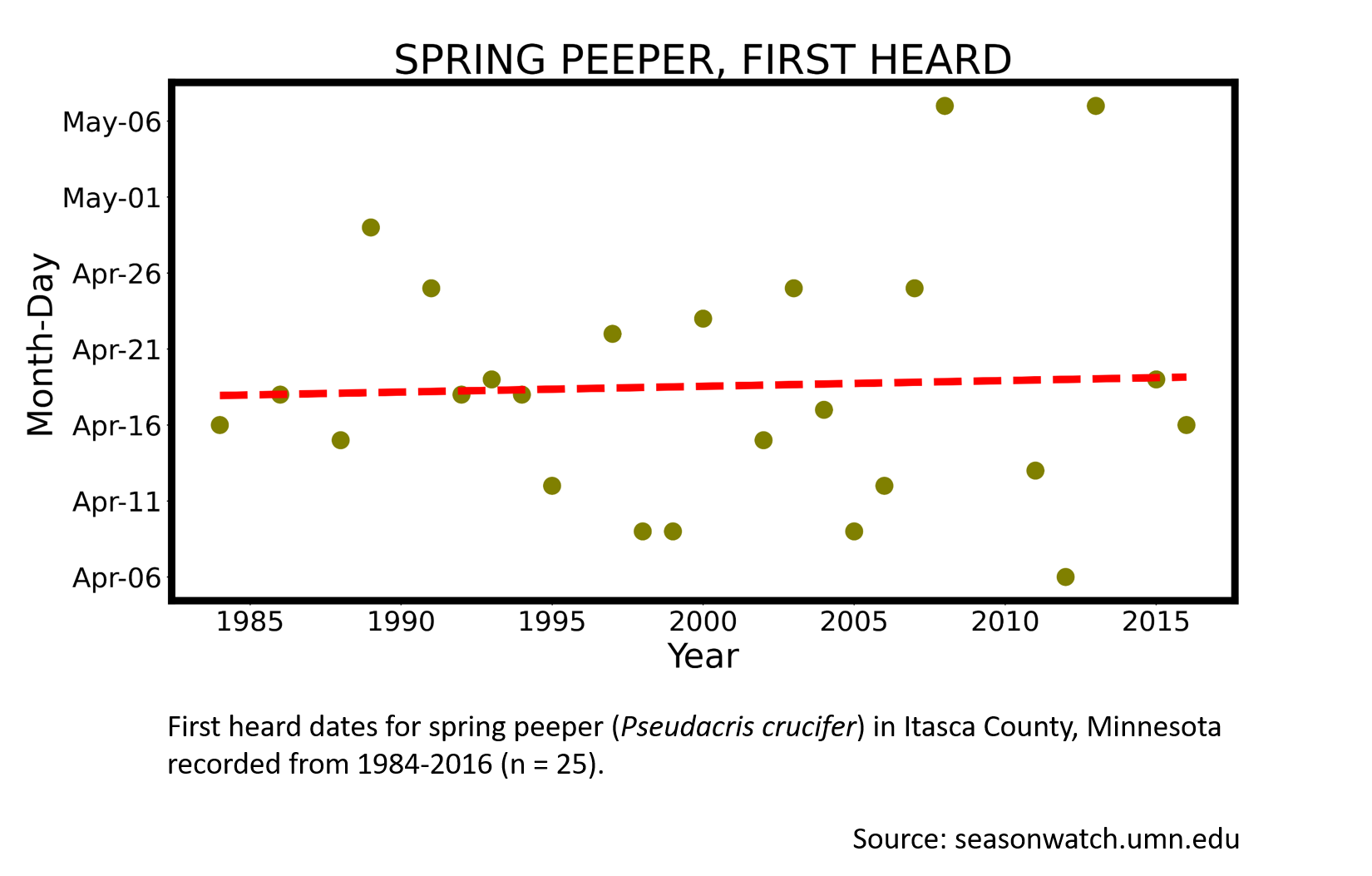
More resources
Keep exploring Season Watch
Keep exploring Season Watch
Co-author: Lynsey Nass, Minnesota Master Naturalist
